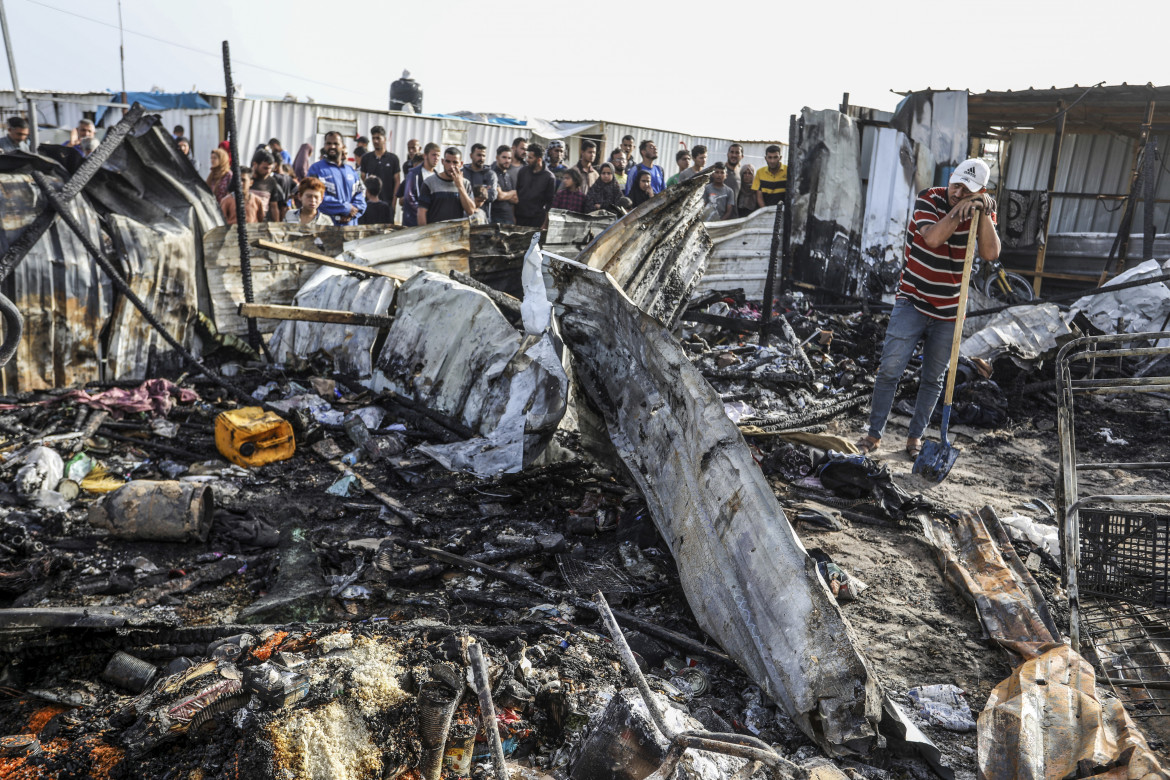Analysis
In Gaza, there is no red line: US weapons killed civilians in Rafah
‘How many more charred corpses does he have to see before the President considers a change in policy?’ a reporter asked the White House.

“How does [the air strike in Rafah] not violate the red line that the President laid out?” When asked this question by a reporter at a press conference on Tuesday, U.S. National Security Council spokesman John Kirby insisted that Israel has not crossed any red line: “[We] don’t want to see a major ground operation. We haven’t seen that at this point.”
The reporter fired back: “How many more charred corpses does he have to see before the President considers a change in policy?” At the word “charred,” his voice wavered slightly. Everyone has seen the images of the fire that destroyed the tents in Tel al-Sultan, the flames in the dark, the screams, the 45 Palestinian victims in Kuwaiti Al-Salam Camp 1.
In Washington, they’re being raked over the coals when it comes to Palestine. Under pressure from the press, the public protests and half the planet, the Biden administration’s policy might appear schizophrenic. It isn’t; it’s following a clear pattern. And it was in line with this pattern that Secretary of State Antony Blinken felt compelled to call the images of the Rafah massacre “horrific” and to call on Israel to “investigate it and see what they come up with,” also stressing that he “can’t confirm” what weapons were used and in what manner.
The New York Times had already established what had happened and published it a few hours before. The U.S. newspaper examined images taken after the massacre by Palestinian journalist Alam Sadeq: missile debris could be seen among the blackened rubble of the displaced persons camp. As the NYT determined, this is debris from the tails of GBU-39 bombs, made in the U.S.
Specifically, they were made at the plant in Woodward, Colorado, a fact that can be ascertained from the serial number, 81873, the unique identifying code for that particular manufacturer. Recently, U.S. officials told the NYT that Washington had encouraged Israel to use this type of bombs because they would be more accurate, “much better suited” for “dense urban environments.”
All of this was confirmed, up to a point, by Israeli army spokesman Daniel Hagari, who said that “the strike was conducted using two munitions with small warheads suited for this targeted strike.” He made this admission with the aim of refuting the accusations regarding the use of large bombs and claiming that this type of weapon could never have caused a fire. Hagari insisted that what caused the fire must have been explosives hidden by Hamas at the camp.
In the NYT’s reporting, munitions experts question the Israeli version: any flammable liquid, gas lamps commonly used among the evacuees, or small power generators could have caused the fire. And, regardless of whether weapons were present or not, if one decides to bomb a camp of displaced persons to hit two Hamas members, it’s impossible that one wouldn’t have accounted for the fact that civilians would be killed, despite Kirby’s view that the use of smaller bombs demonstrates “an effort to be discrete” (!).
The 45 dead last Sunday have been followed by many more, many of them in Rafah: 21 on Tuesday in the Al-Mawasi camp and 15 more on Wednesday (totaling at least 36,171 Palestinians killed in the eight months of the offensive). Attacks are coming both from the air and from ground-level operations, with tanks that have now entered the city. In the center, journalists on the ground are reporting that many families are trapped because of artillery and drone fire that prevents many from escaping. “Anyone who moves is being shot at by Israeli drones,” resident Abdel Khatib told Al Jazeera.
Most of the population – both local and displaced – has already been pushed westward or toward the center, forced to flee yet again. There is less and less space available, both because of the magnitude of the destruction and because of the Israeli “buffer zone” that has expanded in recent months.
Before October 7, the area that had been absorbed by Israel was between two and three kilometers wide (out of the Strip’s width of ten kilometers), depriving Palestinians of the arable land traditionally found in Gaza’s eastern belt. Now, according to Sanad’s analysis after viewing satellite images and videos shot by the Israeli army on the ground, the buffer zone has come to occupy 33 percent of the whole Strip, about 120 square kilometers out of a total of 360.
Meanwhile, while the land crossings remain closed to aid (as they have been since May 6), in Jerusalem the Israeli parliament approved, with 42 “yes” and six “no” votes,” the first reading of a bill calling for labeling the UN agency for Palestinian refugees, UNRWA, a “terrorist organization.” If the bill passes the following rounds of votes as well, Israel could “legally” cut off all relations with UNRWA, kick it out of its territory, close its offices and bank accounts. It could also “institutionalize,” for the first time in history, its accusation that the UN is promoting terrorism.
Originally published at https://ilmanifesto.it/a-gaza-nessuna-linea-rossa-armi-usa-sulle-tende-di-rafah on 2024-05-30
